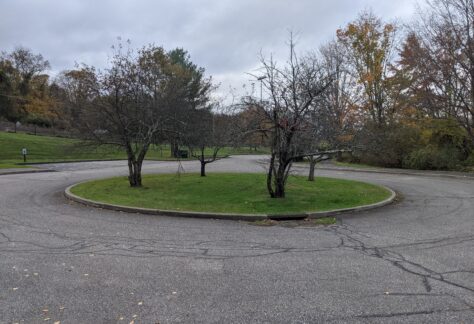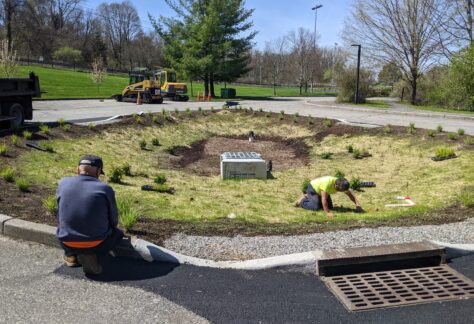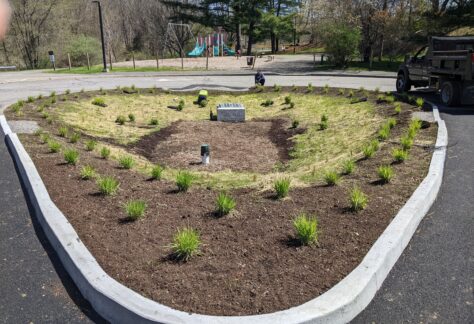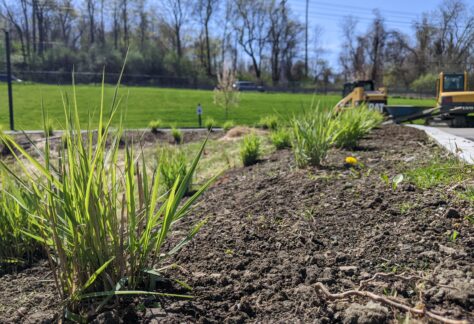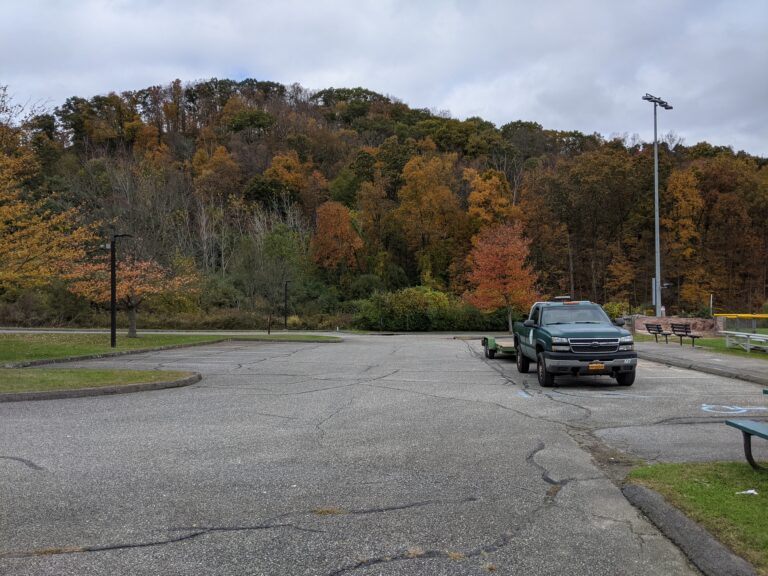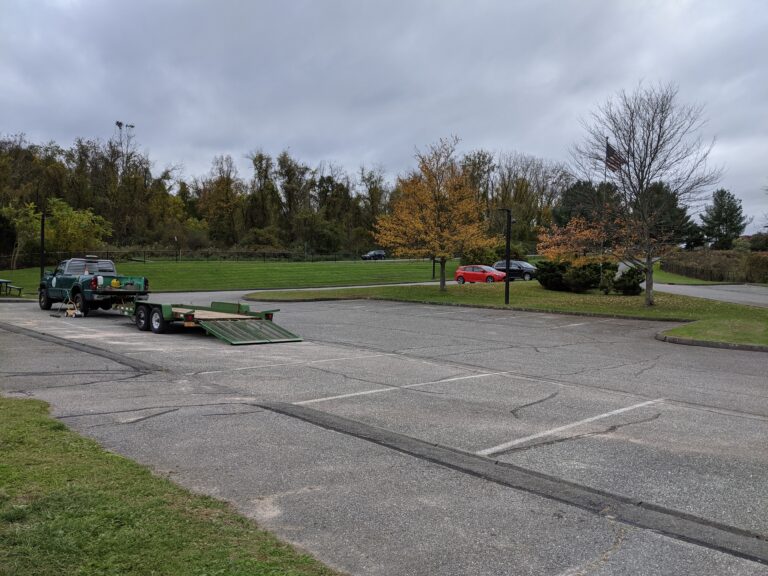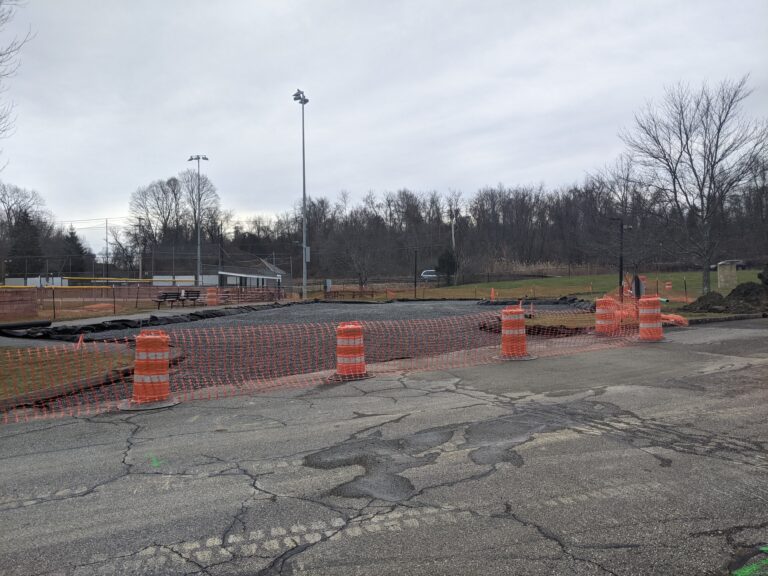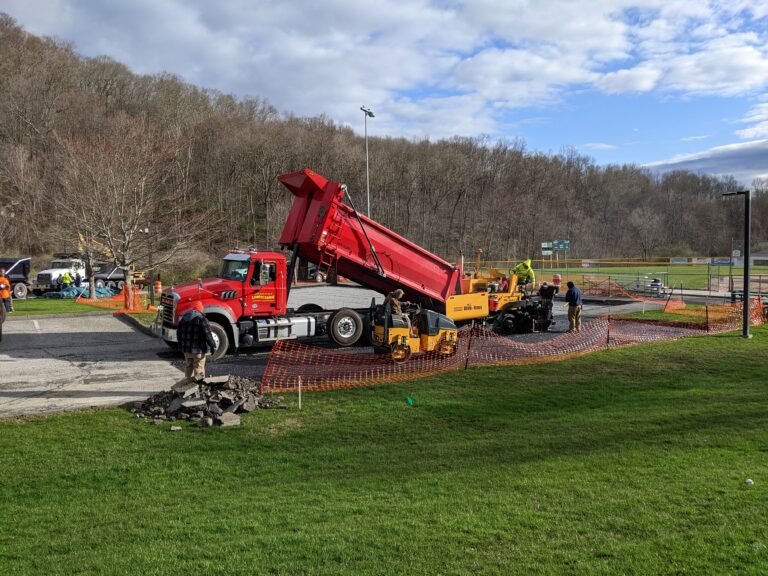Scolpino Park - Bringing Green Infrastructure To Our Parks
In May 2022, after a long and bitter winter, Yonkers Excavating planted the final shrub to complete construction at our Scolpino Park retrofit. We worked with Insite Engineering to design and develop a project that would provide the most environmental benefit with the least impact to the normal functions of the park. We decided to install a FocalPoint bioretention cell developed by Ferguson near the playground and we also replaced the existing parking lot near the entrance with permeable pavement.
How Does Bioretention Work?
Bioretention is the process of using plants and special soil to filter stormwater. For this project, we used the Ferguson FocalPoint bioretention system.
Mother Nature knows what’s best for the environment, so this product tries to imitate the way that native grasslands and wetlands provide stormwater treatment. Think of it as a big filter. As seen in the cross section, on top of the filter are plants that thrive in the wetland, such as grasses and reeds. The roots of these plants, along with the soil, absorb the pollutants in the stormwater, trapping and preventing them from entering the waterways. At the end of the year, some sections of the plants, mulch and soil are disposed of, ensuring that the captured pollutants are removed from the area.
This not only provides ample treatment to the incoming stormwater, but can also help provide resiliency. As climate change continues to impact the frequency and intensity of rainfall events, it is vital that we utilize green infrastructure whenever possible. Doing such allows us to be flexible in the amount of stormwater that is collected during these events.
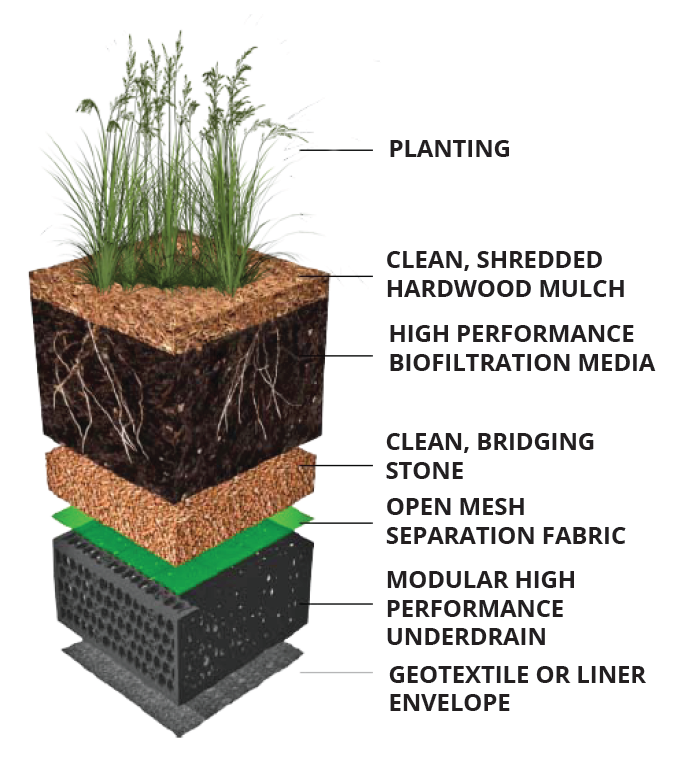
Below is an aerial before and after comparison of the bioretention practice. These photos show how a small and unused space can be transformed into an effective piece of stormwater infrastructure, providing stormwater treatment, storage and can even help slow down the rate of flooding!
The following are photos from throughout the construction process. The existing soil in the circle was removed and replaced with a specifically engineered, fast draining media. Specialized species were planted around the unit to provide the required filtration. After a few months, the small plant plugs took hold and quickly made a lush and green space, fitting in nicely with the natural park setting.
Why Permeable Pavement?
The parking lot was beginning to need repair or replacement given that many sections were crumbling. Permeable pavement is an excellent option to provide the structural strength needed to support cars and other heavy machinery, while also allowing stormwater to permeate into the ground.
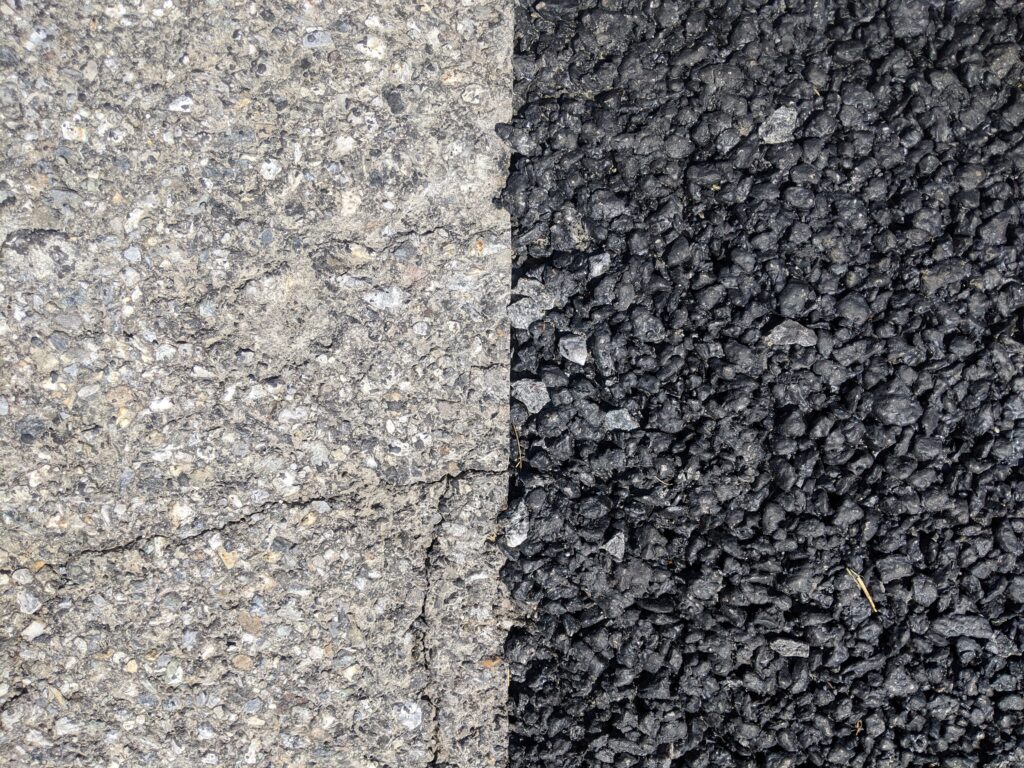
A traditional asphalt parking lot prevents almost all of the rainwater from passing through. In most storms, porous pavement can allow 100% of the rainfall to make it through the material and into the ground. This image shows traditional asphalt on the left with porous pavement on the right. Notice how large the chunks of rocks are in the porous pavement. These rocks create small gaps and air holes, allowing water to flow through.
Now, the stormwater can enter the soil below and recharge the groundwater while getting filtered, rather than transport to the nearest stormwater piping system. This is incredibly important to not only clean up nearby East Branch Reservoir, but local habitat too. Scolpino Park is surrounded by a thriving wetland system which was suffering from runoff, pollutants, and sediment from the park.
The following is a video showing part of the paving process for the permeable pavement. The entire construction process is almost identical when compared to traditional asphalt with the big difference being the binder that holds the rocks together. To achieve the porosity, a stickier binding agent is used, which helps create the air pockets in between rocks. The tackier material is a little harder to work with, but provides great results!
Overall, these retrofits not only improve the aesthetic of the site, but also clean the stormwater that flows into the vital wetlands that are right next to the park. Filtering and managing the stormwater ensures improved health of the wetland habitat and all the different organisms that live within it. Doing such can reduce the amount of algae in the water, increase available oxygen, reduce floating sediments which improves water quality, and reduce the amount of pollutants and trash entering the waterway and nearby reservoir.

